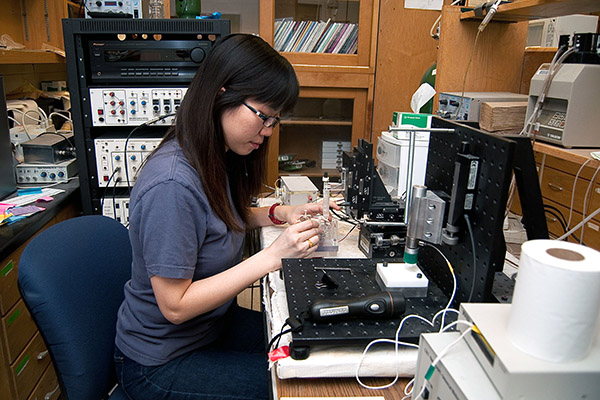About the Center for Paralysis Research
Unveiling the mysteries enshrouding pathological mechanisms of nervous system trauma and diseases is one of the most challenging medical problems of the modern era. The need for major advancement in this arena is fueled by the ever-increasing incidence of injury and disease among people from all walks of life. The mission of Purdue University Center for Paralysis Research is to meet this challenge head on, to decipher mechanisms of neuropathology through a concerted multi-disciplinary effort.
Our Mission
The Center for Paralysis Research (CPR) deciphers mechanisms of neuropathology through a concerted multi-disciplinary effort to improve quality of life for those around the world.
CPR is strictly a research group; however, we often engage in clinical trials. For those living with pre-existing neurological conditions from damage to the central nervous system, we recommend the following resources:
- Search the United Spinal Association Disability Products & Services Directory to discover providers and organizations that specialize in optimizing the health, independence and quality of life of people with a spinal cord injury or disease.
- The National Institute of Neurological Disorders and Stroke maintains up-to-date information on spinal cord injuries, treatments, and research.
- The United Spinal Association is dedicated to empowering people with spinal cord injuries and disorders (SCI/D), including veterans, to live successful and fulfilling lives.
History
CPR was established in 1987 as an independent neurotrauma research center that aimed to help those affected by central nervous system trauma and other neurological diseases through translational research efforts. Currently, the center is directed by Dr. Riyi Shi. With a strong background in both clinical and basic research, Dr. Shi plans to make CPR a nationally and internationally recognized research center for neurotrauma. As an effort to take CPR to a new and higher level, Dr. Shi has created an advisory board comprised of five individuals from various backgrounds to promote diversity of new ideas for the center. He plans to strengthen relationships and build partnerships with research entities at Purdue, local communities, national and international research centers, and corporate entities. Plans for the future combined with our terrific and dedicated group of researchers will propel the center into a new age of research and discovery in neurotrauma.
Our Facilities
CPR occupies two research buildings (VCPR, Doyle) adjacent to the College of Veterinary Medicine. The center has the majority of the equipment and facilities needed for most in vitro and in vivo investigations.
Main Instrumentation and Capabilities
- Andor/Nikon spinning disk confocal microscope
- Atomic force microscope
- Environmentally controlled inverted fluorescent microscope
- Reflection microscope
- In vivo and ex vivo electrophysiology
- IR spectroscopy
- Luminescent, fluorescent, UV plate readers and spectrophotometers
- Cell and tissue culture hoods and incubators
- Biologic safety hoods
- Cryostats and histological processing
- Animal behavior assessment
- Electro spinning
- 3D printing
- -80°F and liquid nitrogen freezers
- Microelectronics fabrication
- Graphic design
- Finite element modeling
Lab Access
The center encourages interdisciplinary collaboration and many members have access to:


